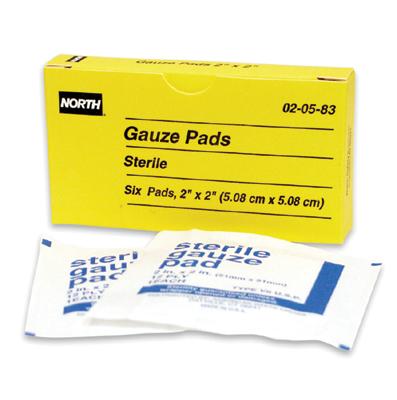Gauze Pads, Gauze Sponges and Tweezers
The Advantages of Using Gauze and Gauze Sponges
There are many good advantages to using gauze and gauze sponges. Gauze sponges are used in wound care for absorbing body fluids and providing protection from dirt and bacteria. Gauze is a commonly used surgical dressing made of cotton, sewn with a loose weave. There are several types of gauze sponges to choose from, including ABD pads, non-adhering dressing, gauze fluff rolls, self-adhering foam, and 2 x 2 inch (5.08 x 5.08 cm) and 4 x 4 inch (10.16 x 10.16 cm) gauze sponges. The type you choose is dependent upon the size and location of the wound.
Gauze and gauze sponges are both highly absorbent and are often used as a first line of defense against heavy bleeding, in addition to covering surgical wounds to prevent exposure at the early critical stages of the healing process until the wounds can safety be left uncovered to open air. Because of their versatility, gauze and gauze sponges offer a number of advantages for first-aid practitioners.
Some of the specific advantages for Gauze and Gauze Sponges are:
(1) Flexibility
Often you can cut gauze to fit different wounds, or even tear it to make the shape you need. Some areas, such as those around toes, fingers or ears, are hard to bandage securely, so gauze can work as an alternative there. Also, wounds that don't fit the pad size of a bandage might require gauze or a gauze sponge.
(2) Convenience
Gauze is one of the best values in bandaging solutions. You can often stock your first-aid kit with a large supply of gauze fairly cheaply. Gauze and gauze sponges are also very lightweight.
(3) Ease of Medical Care
Although gauze does protect open wounds and burns, very little of the gauze actually touches the surface beneath it. This means you can remove it without causing too much discomfort to the healing patient since the gauze isn’t stuck to the wound. Air and sunlight, important to the healing process, can also pass through gauze. This helps wounds clot more quickly, thanks to exposure to the air and sunlight. There is also a visual advantage where the injury can be visually assessed to a certain extent without having to pull the gauze aside to look, helping to determine whether the gauze needs changing without re-opening the wound.
(4) Pressure
When gauze covers a surgical wound, often the medical staff will apply a drain to the wound after completing the gauze dressing. The purpose of the drain is to pull any fluids out, but the pressure also pulls the gauze together. This has the same result as a pressure dressing, while putting less stress on the incision. The gauze will shrink as a result of the drainage, and works to hold the skin together for the healing process. This translates to fewer dressing changes for the healing patient.
While this information is provided for your convenience, it is no substitute for seeking the most current information from medical professionals.
The information on All Safety Products First Aid resource section details information that can further assist you in selecting the correct safety First Aid products to ensure ANSI compliance as well as other applicable codes.
Contact All Safety Products today to locate the gauze pads, gauze sponges and tweezers that best meet your needs or request a quote for first aid kit items and other emergency medical supplies.





